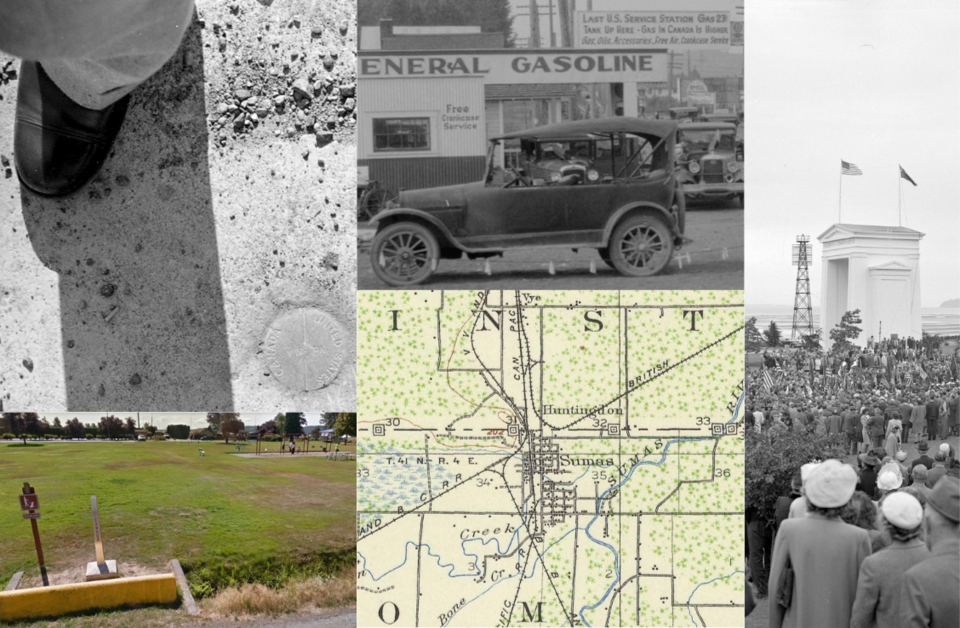The border between the United States and Canada can seem like a huge, monolithic thing cutting the land along the 49th parallel throughout B.C.
But, like almost everything created by humans, it has some odd bits. At a minimum, there are some unexpected quirks. Like how when one takes the ferry from Vancouver to southern Vancouver Island you cross into, and out of, a weird wedge of the U.S. out in the ocean.
Here are five more local-ish quirks to the border.
1. Sumas and Blaine have parts north of the 49th parallel
So while we all think of the border as running along the 49th parallel (the latitude as determined through mathematical coordinates), that's not quite accurate.
The border was agreed upon as the 49th parallel for western Canada, but when it came time to survey and mark it with monuments, there were a few human errors, and some of the monuments are north of the 49 parallel, and some are south.
When it comes to and , both in Washington state, there are pieces of the towns north of what many assume is the border.
2. You can cross the border at Peace Arch Park without going through a border checkpoint
Before you try and do this, keep reading.
What people consider Peace Arch Park is actually two parks, and a . They were created to celebrate the peace between Canada and the USA back in the 1920s and 30s, along with the arch itself.
As part of that symbol of peace, visitors can arrive on either side of the two parks and cross over into the other one without going through the nearby border crossing. During the met up here, because of this rule.
But, that doesn't carry very far. The rule only covers the parks themselves, and border agents monitor the edges of the park for anyone trying to sneak into either country illegally.
Calling the incident a "war" is perhaps a bit dramatic, but that's how it's been dubbed.
It was a conflict between the young USA and the United Kingdom back in 1859 over the border between the Gulf Islands and San Juan Islands. They're the same group of islands, but some are now Canadian and others American.
In 1859 it wasn't clear exactly which islands were on which side of the border, and a minor conflict between a British sheep farmer and an American customs officer grew, with militias from both sides showing up.
One British pig died and the Americans got their way with the border.
4. The Juan de Fuca
It's not like all border disputes have been resolved, and one of the most minor ones is off the west coast in the Juan de Fuca Strait.
There's a small chunk of ocean near the mouth of strait as it enters the Pacific Ocean where the exact border is a little unclear.
Because of the jagged edge of Vancouver Island and how maritime borders work, there are about 15 square kilometres of ocean that both the USA and Canada claim. It comes from the way both countries define the shoreline, essentially.
It's not a popular topic since it's not much space and the only thing that really happens out there is some fishing.
5. Getting around the border in an unusual way
Back in 2005 three men from Metro Vancouver thought they had a clever way to get across the border, until they got charged with international drug smuggling.
They had built a proper tunnel that started underneath a on the Canadian side of the border and ran to a house on the American side.
The 110-metre tunnel was used to move cannabis under the border undetected by border patrols. And it wasn't just a fancy hole; they had concrete floors and reinforced wooden walls and ceilings. They had built it telling people they were .



